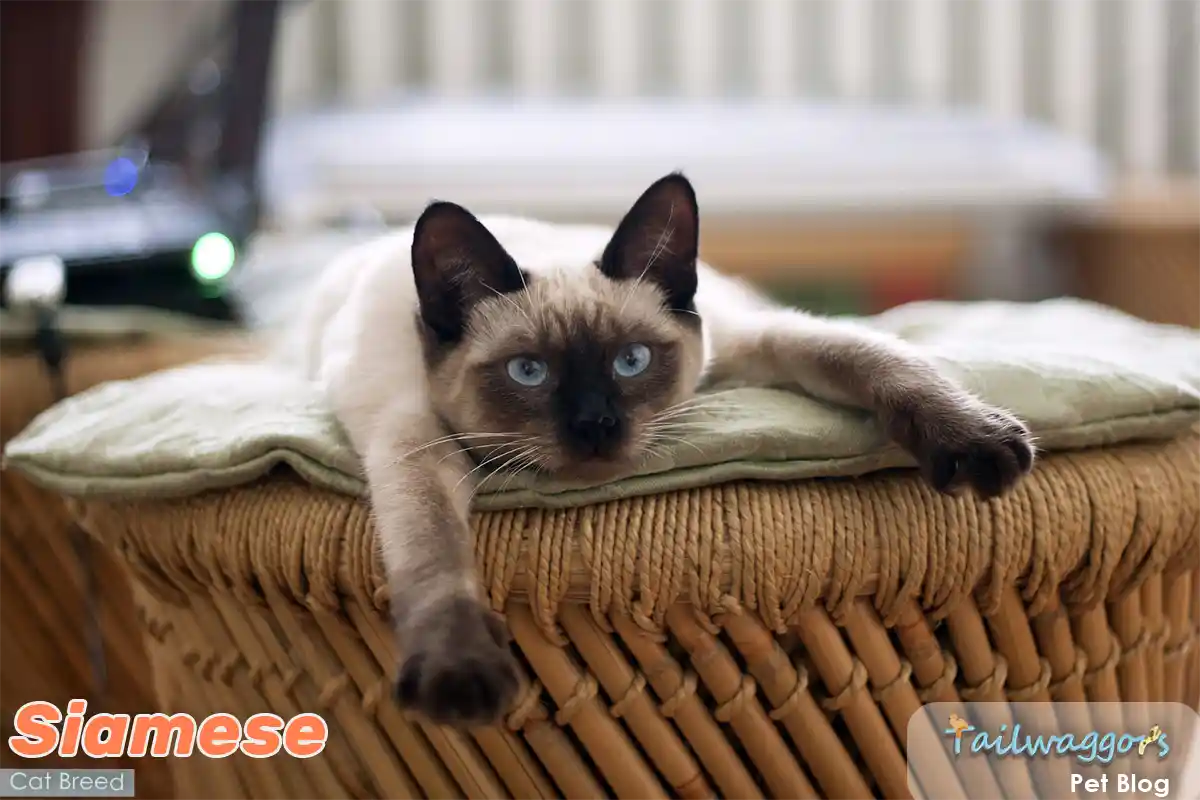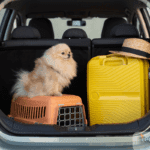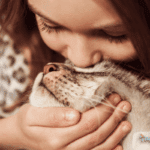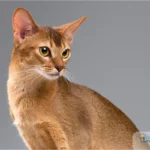The Siamese Cat Breed
Siamese cats are renowned for their elegant, sleek bodies, vivid blue almond-shaped eyes, and distinctive color points. These captivating felines have charmed cat enthusiasts worldwide, not only for their appearance but also for their affectionate and intelligent nature.
Known for their “dog-like” qualities, Siamese cats form strong emotional bonds with their human families, often following them around and engaging in playful interactions. Their vocal tendencies make them master communicators, ensuring they’re always at the center of household activities.
Whether you’re a family with children, a single individual, or part of a multi-pet household, the Siamese cat’s adaptable, loving, and social nature makes them an excellent companion. If you’re seeking a loyal and intelligent feline friend, the Siamese cat could be the perfect choice for you.
Let’s explore this remarkable breed’s traits, care requirements, and associated costs.
Quick Facts: Meet the Siamese Cat
Here’s a snapshot of Siamese cat traits to help you understand their unique qualities:
| Characteristic | Description | Rating |
| Size | Males: 8–12 lbs (3.6–5.4 kg), Females: 6–8 lbs (2.7–3.6 kg) | ⭐⭐⭐ |
| Average Lifespan | 15–20 years | ⭐⭐⭐⭐ |
| Intelligence Ranking | Top 5 smartest breeds | ⭐⭐⭐⭐⭐ |
| Exercise Requirements | Moderate; thrive on interactive play | ⭐⭐⭐⭐ |
| Grooming Needs | Low; require minimal grooming | ⭐⭐ |
| Training Adaptability | Highly trainable; excel with positive reinforcement | ⭐⭐⭐⭐⭐ |
| Compatibility with Children | Excellent; affectionate and playful | ⭐⭐⭐⭐ |
| Energy Level | High; active and playful | ⭐⭐⭐⭐ |
| Shedding Level | Low to moderate | ⭐⭐ |
| Apartment Living | Suitable; adapt well to various living environments | ⭐⭐⭐⭐ |
| Health Issues | Prone to dental and respiratory conditions; regular vet check-ups recommended | ⭐⭐⭐ |
| Cost of Ownership | Moderate; includes food, healthcare, and enrichment | ⭐⭐⭐ |
| Vocal Tendency | High; talkative and expressive | ⭐⭐⭐⭐ |
| Social Needs | High; thrive on companionship and interaction | ⭐⭐⭐⭐⭐ |
- • Siamese cats are affectionate and social, deeply bonding with their families.
- • Highly intelligent, they excel at learning tricks and solving puzzles.
- • Famous for their vocalizations, they actively “converse” with their owners.
- • Their high energy demands interactive play and daily activity.
Siamese cats are versatile and thrive in various living environments, including apartments, provided they receive adequate stimulation and companionship. Their low-maintenance grooming needs make them a great choice for first-time cat owners. However, their high social requirements demand dedicated time and interaction.
Key Traits of Siamese Cats
- Affectionate and Social: Siamese cats are deeply bonded to their human families, thriving on companionship and attention. They’re ideal for homes where they won’t be left alone for long periods.
- Intelligent and Trainable: Their keen intelligence allows them to learn tricks, solve puzzles, and even respond to commands with consistent training.
- Vocal Communicators: Renowned for their “conversations,” Siamese cats use their unique voices to express needs and engage with their owners.
- Active and Playful: High energy levels mean they require daily interactive play to stay healthy and entertained.
For readers exploring different cat breeds, check out our Complete Guide to Choosing the Perfect Cat Breed for comparisons and insights into other popular feline companions.
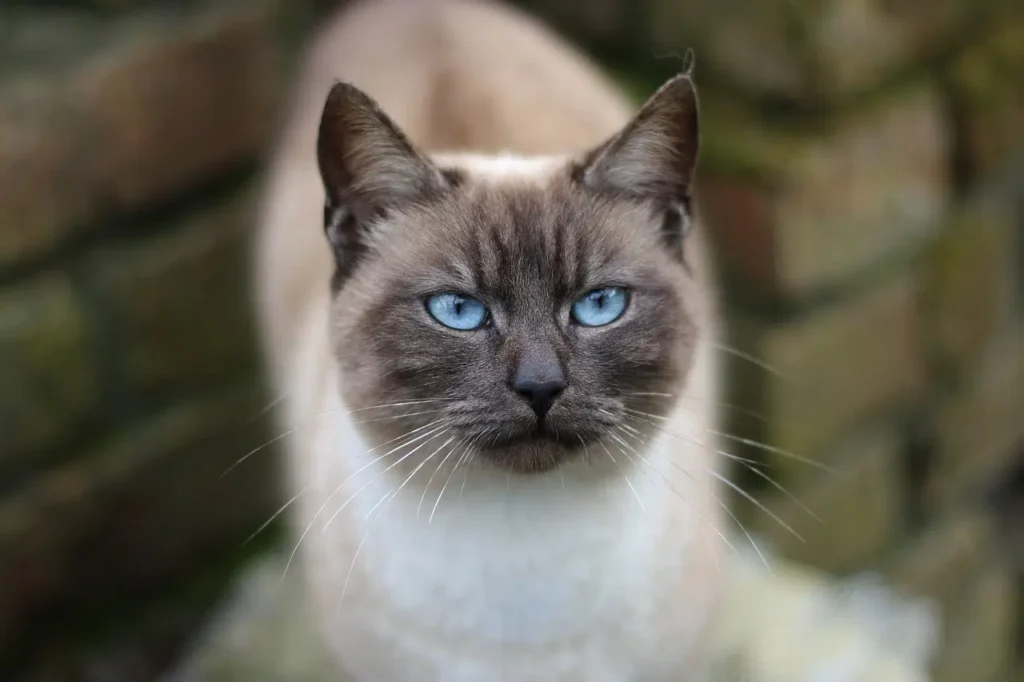
History and Origins of the Siamese Cat
Siamese cats, celebrated for their sleek bodies and striking blue eyes, have a rich history steeped in culture, legend, and global admiration. Originating in Thailand, formerly known as Siam, these elegant felines have been esteemed for centuries for their unique beauty and intelligence.
Quick Facts About The Siamese Cat Origins
| Aspect | Detail |
| Geographic Origin | Thailand (formerly Siam) |
| Historical Mentions | Depicted in ancient Thai manuscripts, such as the “Tamra Maew” or “Cat-Book Poems” |
| Introduction to West | Late 19th century; first brought to England and then the United States |
| Recognition | Among the earliest breeds recognized by cat fancier associations, including the CFA in 1906 |
The Enigmatic Origins of the Siamese Cat
The Siamese cat’s journey from temple guardians in Thailand to beloved companions worldwide is a tale woven with mystery and allure. Their storied history traces back centuries, much like the Abyssinian Cat, another ancient breed steeped in mystery and lore. Let’s explore their fascinating history.
Ancient Beginnings: Sacred Companions
In Thailand, Siamese cats were regarded as sacred beings, often residing in royal households and temples. Ancient texts such as the Tamra Maew (or “Cat-Book Poems”)—dating back to the 14th century—depict cats with features resembling the Siamese, emphasizing their cultural and spiritual significance. These felines were believed to bring good fortune and were often entrusted with the care of sacred artifacts.
Royal Legends: Guardians of the Crown
According to legend, Siamese cats were loyal protectors of royal treasures. One myth suggests these cats would wrap their tails around goblets and cross their eyes to keep an unwavering watch, a trait thought to explain the crossed eyes and kinked tails once common in the breed. While these physical traits are no longer a hallmark of modern Siamese cats, their reputation as vigilant and loyal companions endures.
Introduction to the Western World
The allure of the Siamese cat reached Western shores in the late 19th century. In 1884, the British consul-general in Bangkok brought a pair of Siamese cats to England as a gift for his sister. Their striking appearance and exotic origins captivated audiences at cat shows, sparking widespread interest. By the early 20th century, Siamese cats had gained a foothold in the United States, where their popularity continued to soar.
Breed Recognition and Evolution
The Siamese cat was among the first breeds recognized by the Cat Fanciers’ Association (CFA) in 1906. Initially, only the seal point coloration—characterized by dark brown points—was acknowledged. Over time, other stunning variations like blue, chocolate, and lilac points were added to the breed standard. These colorations, paired with their sleek bodies and almond-shaped eyes, solidified their status as one of the most iconic cat breeds.
Modern-Day Siamese: A Global Icon
Today, Siamese cats are celebrated globally for their elegance, intelligence, and affectionate nature. Their distinct appearance and vocal personalities make them a favorite among cat enthusiasts, while their prominence in pop culture, from movies to literature, underscores their enduring appeal.
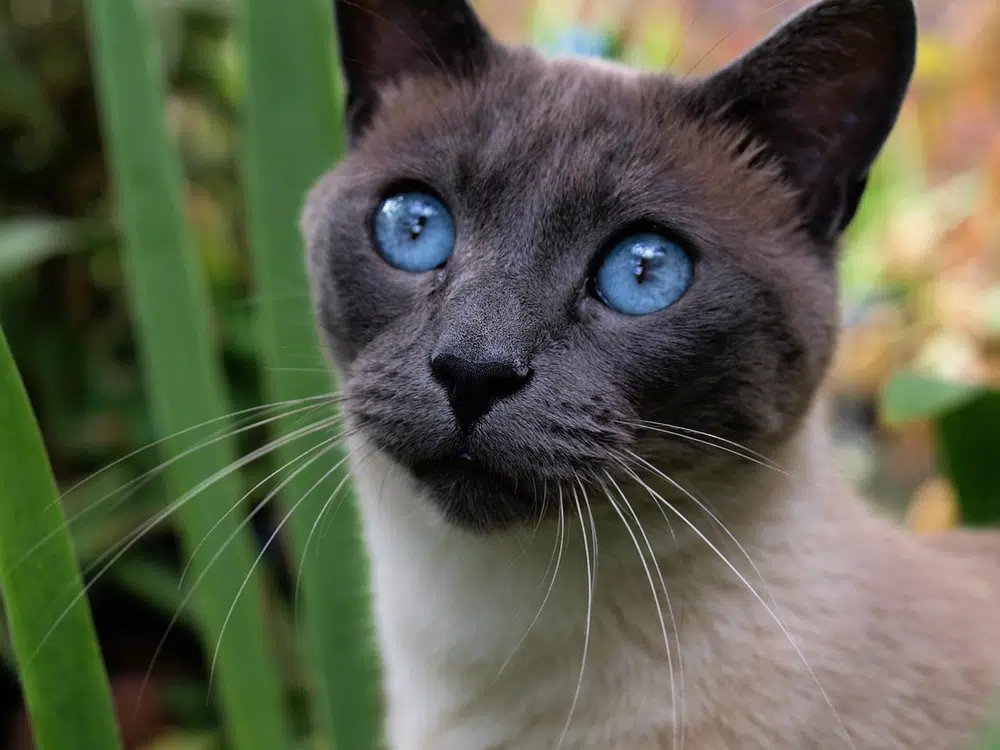
Personality Traits of the Siamese Cat
Siamese cats are beloved for their dynamic and engaging personalities, marked by sociability, intelligence, and vocal expressiveness. These traits make them ideal companions for individuals and families who appreciate an interactive and affectionate feline.
Table: Temperament & Behavior Profile
| Behavioral Trait | Characteristic | Training Need | Adaptability Rating |
| Social Interaction | Highly social | High | ⭐⭐⭐⭐⭐ |
| Activity Level | Very high | High | ⭐⭐⭐⭐⭐ |
| Problem Solving | Excellent | Moderate | ⭐⭐⭐⭐⭐ |
| Attention Seeking | High | Low | ⭐⭐⭐⭐ |
| Independence | Low | Low | ⭐⭐⭐ |
Loyal and Affectionate Companions
Siamese cats are known for their deeply loyal and affectionate nature. These cats often follow their owners from room to room, seeking interaction and companionship. Their “dog-like” loyalty makes them incredibly endearing, but this strong bond also makes them prone to separation anxiety when left alone for extended periods.
Siamese cats thrive in environments where they receive consistent interaction and love,” says Dr. Esther Knoetze, BSc, BVSc. “Their need for companionship makes them ideal for families or individuals who spend a lot of time at home.”
Real-Life Example: Siamese cat owners often recount how their pets greet them at the door, curl up on their laps, or engage in lively “conversations” throughout the day. This breed’s devotion and social nature make them irreplaceable companions.
Intelligent and Engaging
Siamese cats are highly intelligent, with a natural curiosity that drives them to explore and interact with their environment. Their sharp minds make them adept learners, capable of picking up tricks, commands, and even leash walking with proper training.
The Siamese cat’s intelligence is one of its defining traits,” notes Dr. Knoetze. “Interactive toys and challenges are excellent tools to keep their minds sharp and prevent boredom.”
Real-Life Example: Many Siamese cats learn to fetch or perform tricks like “sit” and “high-five” with relative ease. Their problem-solving abilities and eagerness to engage with their owners are unmatched.
Playful and Energetic
Siamese cats maintain a kitten-like playfulness well into adulthood, making them a joy for households seeking an active feline companion. They require regular physical activity to stay healthy and happy.
Daily play sessions are vital for Siamese cats,” says Dr. Knoetze. “Their high energy levels mean they need structured activities to prevent boredom and maintain their health.”
Real-Life Example: Siamese cats often love chasing feather wands, darting after laser pointers, or exploring climbing structures. Owners frequently describe them as the “life of the house,” constantly looking for ways to play and entertain.
Social and Adaptable
Siamese cats are naturally sociable, thriving in environments where they can interact with other pets and family members. They tend to coexist peacefully with other animals when properly introduced.
Their adaptability and gentle temperament make Siamese cats a great choice for multi-pet households,” says Dr. Knoetze. “However, gradual introductions are key to ensuring harmony.”
Real-Life Example: In homes with children, Siamese cats often become playful and tolerant companions. Their patience and ability to engage make them favorites among younger family members and other pets alike.
Vocal and Expressive
One of the most distinctive traits of Siamese cats is their vocal nature. They use a wide range of sounds to communicate their needs and emotions, often engaging their owners in “conversations.”
🐱 Fun Fact: Siamese cats are nicknamed “chatterboxes” for their talkative nature. Their expressive, melodic vocalizations are a hallmark of the breed, adding to their charm.
Real-Life Example: Many owners share how their Siamese cats “talk” to them throughout the day, whether asking for food, seeking attention, or simply commenting on their surroundings. Their vocal expressiveness makes them a unique and interactive breed.
Understanding Siamese Personalities
Siamese cats are perfect for households that value interaction, intelligence, and playfulness in a feline companion. Their endearing traits make them ideal for families, singles, and even homes with other pets. By appreciating their unique personalities and providing the right environment, owners can enjoy a fulfilling relationship with this extraordinary breed.
The Siamese cat’s playful and affectionate personality is shared by other breeds like the Ragdoll Cat, which also thrives on human interaction and companionship.
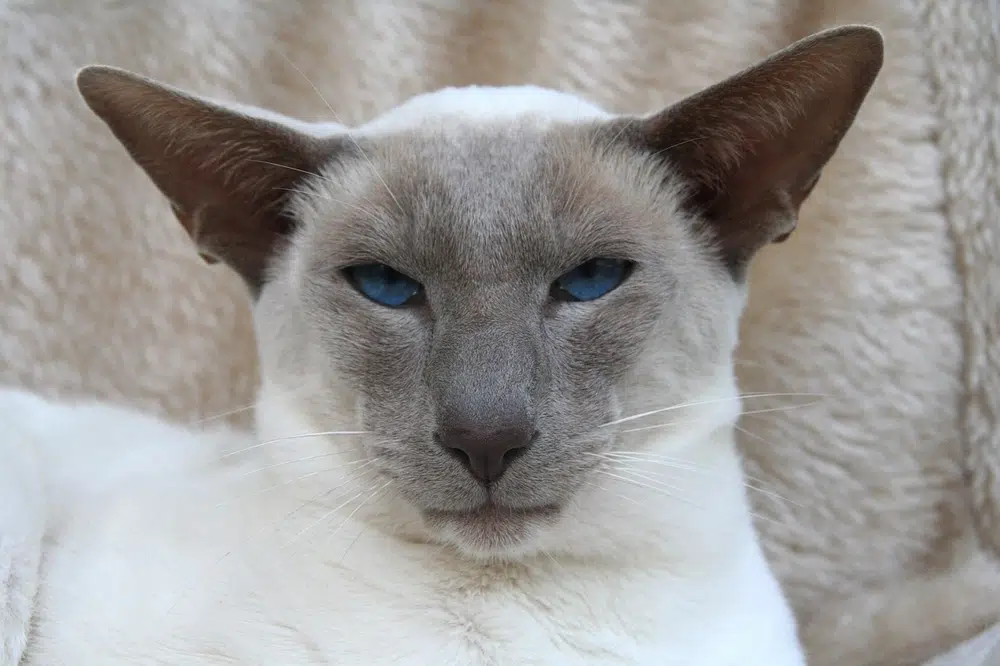
Physical Characteristics of the Siamese Cat
Siamese cats are celebrated for their elegant and distinctive appearance, blending sleek physiques, striking blue eyes, and unique color-pointed coats. Their timeless beauty, graceful demeanor, and fascinating variety make them one of the most recognizable cat breeds worldwide. Among their most intriguing aspects are the eight unique types of Siamese cats, each with its own charm and appeal.
Size and Build
- Average Size: Siamese cats are medium-sized felines. Males typically weigh between 11 to 15 pounds (5 to 7 kg), while females range from 8 to 12 pounds (3.5 to 5.5 kg). Their size contributes to their athletic, agile nature.
- Notable Features: Siamese cats boast a slender, muscular frame with long legs and a tapering tail. Their graceful movements and striking appearance have made them synonymous with feline elegance.
Coat and Colors
- Coat Texture: Siamese cats have a short, fine coat that lies close to the body, giving it a sleek, glossy appearance. This low-maintenance coat is both functional and visually striking.
- Color Points: Renowned for their temperature-sensitive color points, Siamese cats develop darker fur on cooler areas of their bodies, such as the ears, face, paws, and tail. The most common color points include:
Image: The Four Iconic Siamese Cat Colors
Here’s a technically accurate revision based on CFA breed standards:
Siamese cats display a fascinating temperature-sensitive coloring known as “points,” where cooler areas of the body develop darker fur. All Siamese cats are born completely white, with their point coloration developing in the first few weeks of life. The CFA recognizes four traditional point colors:
Table: Official Siamese Color Points According to CFA Standards
| Color Point | Points Description | Body Color | Nose Leather & Paw Pads | Key Features |
|---|---|---|---|---|
| Seal Point | Deep seal brown, trending to black | Even pale fawn to cream, warm in tone | Dark seal brown | Most traditional coloring; definite contrast between warm body and dark points |
| Chocolate Point | Milk-chocolate brown, warm in tone | Ivory with minimal shading | Cinnamon-pink | Points should be uniform in color, no hot spots or darker areas |
| Blue Point | Deep blue-grey, cool in tone | Bluish white, cold in tone | Slate blue | Points should be solid and clearly defined against the body color |
| Lilac Point | Pinkish grey with frosty appearance | Glacial white, magnolia tone | Lavender-pink | Most delicate of the four colors; points should show pinkish tone |
🐾 Tailwaggors Tip:
These temperature-sensitive points result from a genetic enzyme that darkens fur in cooler body regions, adding to their unique appeal.
Important Color Standards:
- Points must be clearly defined and free of ticking or white hairs
- Body color should be even, though slight shading on the back is permissible
- Point color should be solid and dense
- Eyes must be vivid blue in all color variations
- No white spotting, barring, or tabby markings allowed
Traditional Point Areas:
- Mask (face)
- Ears
- Legs and feet
- Tail
Note: The mask should not extend over the entire face, but should be clearly defined across the eyes and nose, forming a V-shape. The mask can take up to 2 years to fully develop.
This information reflects current CFA show standards and breed recognition criteria. These standards are used in competitive showing and breeding programs to maintain the distinctive Siamese appearance.
For an in-depth look at breed-specific markings, head over to our Complete Guide to Bengal Cats, known for their wild and exotic coat patterns.
The Four Types of Siamese Cats
Siamese cats are renowned for their elegant appearance and engaging personalities. Within the breed, enthusiasts and breeders often distinguish between four primary variations, each with unique physical traits:
Table: Siamese Cat Variations
| Type | Description |
|---|---|
| Traditional Siamese (Applehead) | Characterized by a rounded “apple-shaped” head and a robust, sturdy build. They have smaller ears and a shorter tail compared to other variations. Known for their friendly and affectionate nature, they enjoy human companionship and are quite vocal. Their short fur requires minimal grooming. |
| Old-Style Siamese (Thai) | Features a medium-sized, slightly elongated head with larger ears. They possess a more athletic build than the Traditional type. These cats are affectionate and enjoy following their owners around. Regular ear check-ups are recommended due to their larger ear size. |
| Classic Siamese | Exhibits a long, sleek body with a long tail and slightly larger ears. They are the most athletic and tallest among the traditional Siamese types. Affectionate and energetic, they thrive on interaction. Regular ear check-ups are advised due to their larger ear size. |
| Modern Siamese (Wedgehead) | Known for a narrow, wedge-shaped head with large, low-set ears. They have a lean, elongated body and slanted eyes. This type is commonly seen in cat shows. Due to selective breeding, some may be predisposed to health issues; regular veterinary check-ups are essential. |
Note: The Cat Fanciers’ Association (CFA) primarily recognizes the Siamese breed with four traditional color points: seal, chocolate, blue, and lilac.
Understanding these variations can help potential owners choose a Siamese cat that aligns with their preferences in appearance and temperament.
Facial Features
- Eyes: Siamese cats are renowned for their large, almond-shaped eyes, which come in a vivid, piercing blue. Their gaze exudes intelligence, curiosity, and emotion.
- Ears: Their large ears are wide at the base, aligning with the wedge-shaped head of modern Siamese types. This enhances their alert, observant demeanor.
🐱 Fun Fact: The combination of their piercing eyes and prominent ears makes Siamese cats appear perpetually attentive and inquisitive.
Why Understanding These Characteristics Matters
The diverse physical characteristics of Siamese cats, including their unique types and stunning features, make them an extraordinary breed for cat enthusiasts. By understanding their needs and traits, potential owners can better appreciate the breed’s history, appearance, and daily care requirements. With proper grooming, nutrition, and veterinary care, your Siamese cat can thrive and enjoy a long, healthy life.
If you’re curious about how Siamese cats compare visually to other iconic breeds, explore our detailed guide on the Persian Cat and their distinct features.
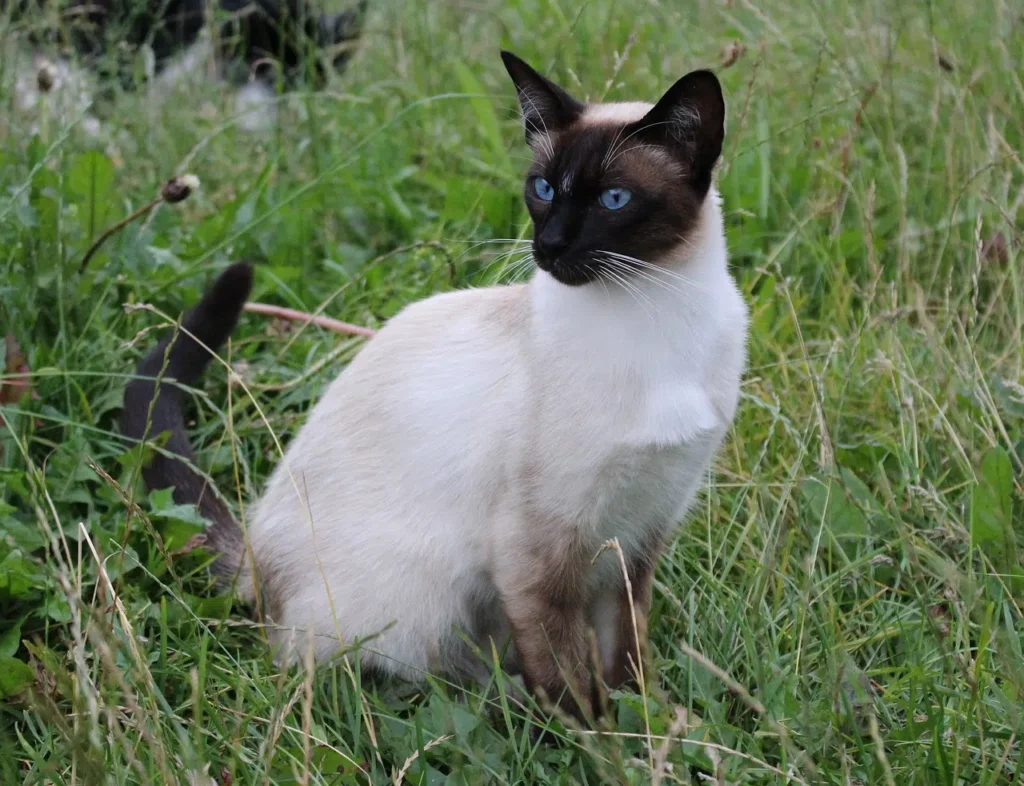
Health and Lifespan of the Siamese Cat
Siamese cats are generally healthy and are considered one of the longer-living cat breeds, with a life expectancy of 12 to 16 years, and some reaching into their late teens or even early twenties with proper care. However, like all breeds, they are predisposed to certain health conditions. It’s important to note that not all Siamese cats will develop these conditions. Regular veterinary check-ups and proper care can help mitigate these risks.
Average Lifespan of Siamese Cats
With an average lifespan of 12 to 16 years, Siamese cats are one of the longer-living feline breeds. Their longevity is influenced by factors such as genetics, a balanced diet, routine health screenings, and an enriched living environment.
“Providing a balanced diet, regular health screenings, and an enriched environment is crucial for extending your Siamese cat’s lifespan. Pay particular attention to their dental and respiratory health, which can be areas of concern for this breed” says Dr. Esther Knoetze, BSc, BVsc.
Common Health Issues in Siamese Cats
While Siamese cats are generally robust, they are prone to certain breed-specific health conditions. These include dental disease, asthma, amyloidosis, and progressive retinal atrophy. Awareness of these potential issues and proactive management through preventive veterinary care and a healthy lifestyle can greatly enhance their quality of life.
Common Health Issues in Siamese Cats
While Siamese cats are generally robust, they are prone to certain breed-specific health conditions. Regular veterinary check-ups and preventive care are essential for maintaining their health.
Key Health Considerations:
- Schedule regular veterinary check-ups
- Monitor for respiratory issues
- Maintain good dental hygiene
- Watch for behavioral changes
- Provide a stable, stress-free environment
Amyloidosis
What is it? A condition where amyloid proteins accumulate abnormally in organs like the kidneys, liver, pancreas and the spleen.
Symptoms:
- Lethargy
- Loss of appetite
- Weight loss
- Increased thirst/urination
Management:
- Regular veterinary monitoring
- Supportive care (No Cure)
- Early detection is crucial
Asthma
What is it? A respiratory condition causing inflammation of the airways leading to breathing difficulties.
Symptoms:
- Coughing
- Wheezing
- Labored breathing
- Open-mouth breathing
Management:
- Avoid environmental irritants like smoke or dust
- Bronchodilator medications
- Corticosteroid treatments
- Regular vet monitoring
Dental Disease
What is it? Common oral health issues including gingivitis and periodontal disease.
Symptoms:
- Bad breath
- Swollen or bleeding gums
- Difficulty eating
- Loose or missing teeth
Prevention & Management:
- Regular tooth brushing
- Dental treats and toys
- Professional cleanings
- Annual dental check-ups
Feline Hyperesthesia Syndrome (FHS)
What is it? Also known as “Twitchy Cat Disease,” causing muscle spasms and behavioral changes.
Symptoms:
- Skin twitching
- Sudden hyperactivity
- Excessive grooming
- Behavioral changes
Management:
- Stress reduction
- Stable environment
- Possible medication
- Regular veterinary monitoring
Progressive Retinal Atrophy (PRA)
What is it? A genetic condition causing gradual degeneration of the retina leading to vision loss.
Symptoms:
- Night blindness (early stage)
- Progressive vision loss
- Complete blindness (late stage)
- Changes in behavior
Management:
- Maintain consistent environment
- Remove hazards
- Regular vet check-ups
- Environmental adaptations
Regular Vet Checkups and Preventive Care
Routine veterinary visits are essential to keeping Siamese cats healthy. Annual checkups help detect potential issues early and ensure vaccinations, flea prevention, and dental care are up-to-date.
Key Care Areas:
- Dental Care: Brush your cat’s teeth weekly and use dental treats to prevent periodontal disease, a common issue in Siamese cats.
- Parasite Control: Administer flea, tick, and worm preventatives monthly to maintain overall health.
- Weight Management: Monitor your cat’s weight regularly and provide a balanced diet to prevent obesity, which can lead to joint and heart issues.
🐾 Tailwaggors Tip:
Combine mealtime with mental stimulation by using interactive feeders or puzzle toys to keep your Siamese active and engaged.
Health Checklist for Siamese Cats
| Health Aspect | Recommended Action | Frequency |
|---|---|---|
| Respiratory Health (Asthma) | Monitor for labored breathing or coughing; minimize exposure to smoke or allergens. | Annually or as needed |
| Weight Monitoring | Check body condition score and adjust portion sizes to maintain a healthy weight. | Monthly |
| Dental Care | Brush teeth and offer dental treats; consider professional cleaning for gum health. | Weekly brushing; annual cleaning |
| Vaccinations | Ensure core vaccines (e.g., feline distemper, rabies) are up to date. | As per vet’s schedule |
| Kidney Health (Amyloidosis) | Schedule kidney function tests to detect protein buildup early. | Annually or as recommended |
| Neurological Health (FHS) | Monitor for twitching or hyperactivity; reduce stress with a stable environment. | Regular check-ups; as needed |
| Eye Health (PRA) | Look for signs of night blindness; create a safe environment for vision-impaired cats. | Annually or as symptoms develop |
| Parasite Control | Administer flea, tick, and worm preventatives for overall health. | Monthly |
| Ear Health | Clean ears regularly to prevent wax buildup and infections. | Bi-weekly cleaning |
Signs of Illness to Watch For in Siamese Cats
Early detection is key to managing health issues effectively. Contact your veterinarian if you notice:
- Persistent coughing or labored breathing (potential signs of asthma).
- Increased thirst or urination (may indicate amyloidosis or diabetes).
- Red or swollen gums, bad breath (often a sign of dental disease).
- Unexplained weight gain or loss (could signal hyperthyroidism or obesity).
- Limping or reluctance to jump (may suggest arthritis or mobility issues).
Ensuring a Healthy Life
By staying proactive and attentive to your Siamese cat’s health, you can help them live a long, fulfilling life. Regular veterinary care, a nutritious diet, and an engaging environment are essential to their overall well-being. With these measures, your Siamese companion can thrive, rewarding you with years of affectionate companionship.
Siamese cats share some health concerns with other breeds, such as the Abyssinian Cat. Learn about preventive care and common issues to keep your feline healthy.
For additional health-related resources:
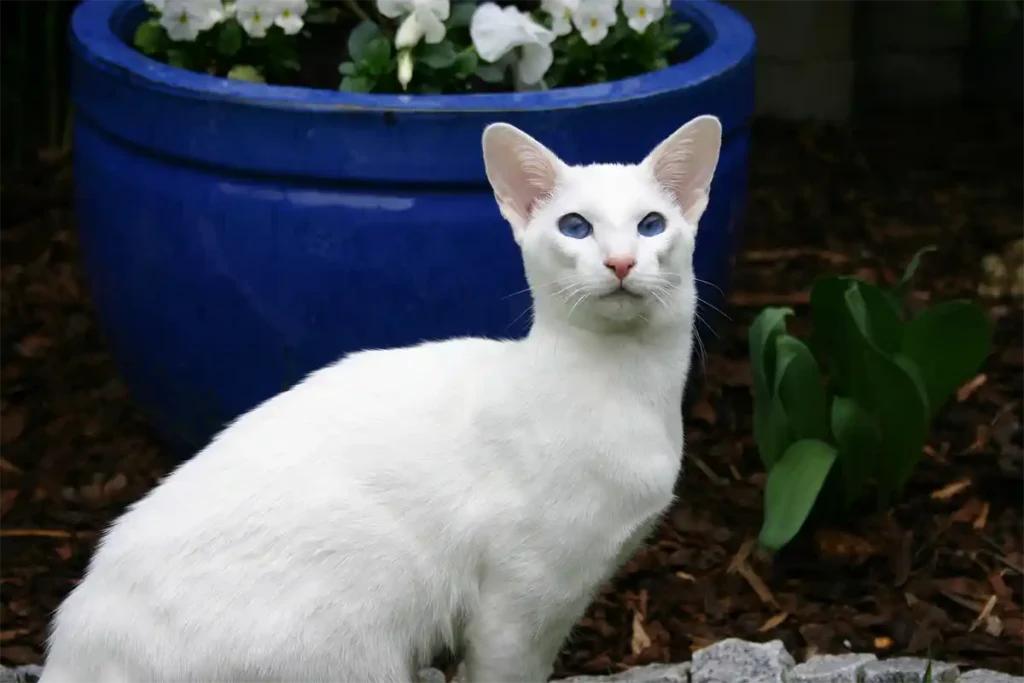
Caring for a Siamese Cat: Grooming, Diet and Enrichment Tips
Table: Care Requirements for Siamese Cats
| Care Aspect | Requirement Level | Frequency | Detail | Importance Rating |
|---|---|---|---|---|
| Grooming | Low | Weekly | Brush short coat, trim nails | ⭐⭐⭐⭐ |
| Feeding | High | Daily | High-protein diet, portion control | ⭐⭐⭐⭐⭐ |
| Exercise | Very High | Twice daily | Interactive play, climbing opportunities | ⭐⭐⭐⭐⭐ |
| Mental Stimulation | Very High | Continuous | Puzzle feeders, training sessions | ⭐⭐⭐⭐⭐ |
| Environment | High | Continuous | Stress-free zones, engaging toys, climbing structures | ⭐⭐⭐⭐⭐ |
Grooming: Keeping Their Sleek Coat Beautiful
Siamese cats are known for their low-maintenance grooming needs, but regular care keeps their sleek coat shiny and healthy.
- Brushing: A quick brushing session once a week using a soft-bristle brush or grooming mitt will remove loose fur and distribute natural oils.
- Nail Trimming: Trim your cat’s nails every 2–3 weeks using cat-specific nail clippers to maintain comfort and prevent scratching damage.
- Dental Hygiene: Siamese cats are prone to periodontal disease. Brush their teeth weekly with cat-safe toothpaste, and provide dental treats to reduce plaque buildup.
🐾 Tailwaggors Tip:
Start grooming routines when your Siamese is a kitten to establish trust and make the process stress-free.
Diet and Nutrition: Supporting Health and Longevity
Choosing the best food for Siamese cats is essential to fuel their energetic and playful lifestyle.
- High-Protein Diet: Siamese cats thrive on animal-based protein, which supports their lean muscle mass and active nature. Look for premium cat foods with real meat as the first ingredient.
- Portion Control: Consult your veterinarian to determine appropriate portion sizes based on your cat’s age, weight, and activity level. Overfeeding can lead to obesity and related health issues.
- Wet vs. Dry Food: A mix of wet and dry food ensures proper hydration and dental health. Wet food provides moisture, while dry food helps reduce tartar buildup.
- Hydration: Siamese cats prefer fresh, moving water. Encourage drinking by using a cat water fountain to promote kidney health and prevent urinary issues.
🐾 Tailwaggors Tip:
Add variety by offering your Siamese cat small amounts of safe human foods like cooked chicken or salmon as treats.
Exercise and Enrichment: Keeping Them Active and Engaged
Siamese cats are one of the most active breeds, requiring daily physical activity and mental stimulation to stay healthy and happy.
Interactive Play
- Dedicate at least 10–15 minutes twice daily to play with feather wands, laser pointers, or rolling balls.
- Introduce climbing opportunities like cat trees and wall-mounted shelves to satisfy their natural instincts and support agility.
Mental Stimulation
Siamese cats are highly intelligent and enjoy problem-solving activities. Without sufficient stimulation, they may resort to undesirable behaviors.
- Puzzle Feeders: Combine meal times with treat-dispensing toys to engage their hunting instincts.
- Training Sessions: Use positive reinforcement to teach tricks like “sit,” “fetch,” or leash walking. Training provides mental enrichment and strengthens your bond.
🐾 Tailwaggors Tip:
Rotate toys weekly to maintain curiosity and excitement. Create DIY enrichment activities like treat scavenger hunts around the house.
Creating a Comfortable Environment
Siamese cats are sensitive and thrive in calm, predictable settings. Here’s how to create a stress-free space that meets their needs:
- Cozy Beds and Blankets: Place soft bedding in low-traffic areas where your Siamese can relax undisturbed.
- Safe Retreats: Provide quiet retreats, such as cat caves or enclosed spaces, for when your cat needs downtime.
- Temperature Regulation: Siamese cats prefer moderate temperatures. Ensure access to warm spots during colder months and cool areas during hot weather.
🐾 Tailwaggors Tip:
Check out our Vet-Approved New Cat Supply Checklist for expert recommendations on bedding, toys, and more.
Why Proper Care Matters
This structure ensures your Siamese cat stays healthy, active, and content. By addressing their grooming, nutrition, exercise, and environmental needs, you can provide a fulfilling life for this affectionate and intelligent breed. Regular veterinary care and a strong human-cat bond will ensure your Siamese thrives as a cherished member of your family.
Proper nutrition plays a key role in keeping your Siamese cat healthy. Our Abyssinian Cat Diet Guide offers evidence-based tips that apply to many breeds, including the Siamese.
For creating a safe and enriching environment, check out:
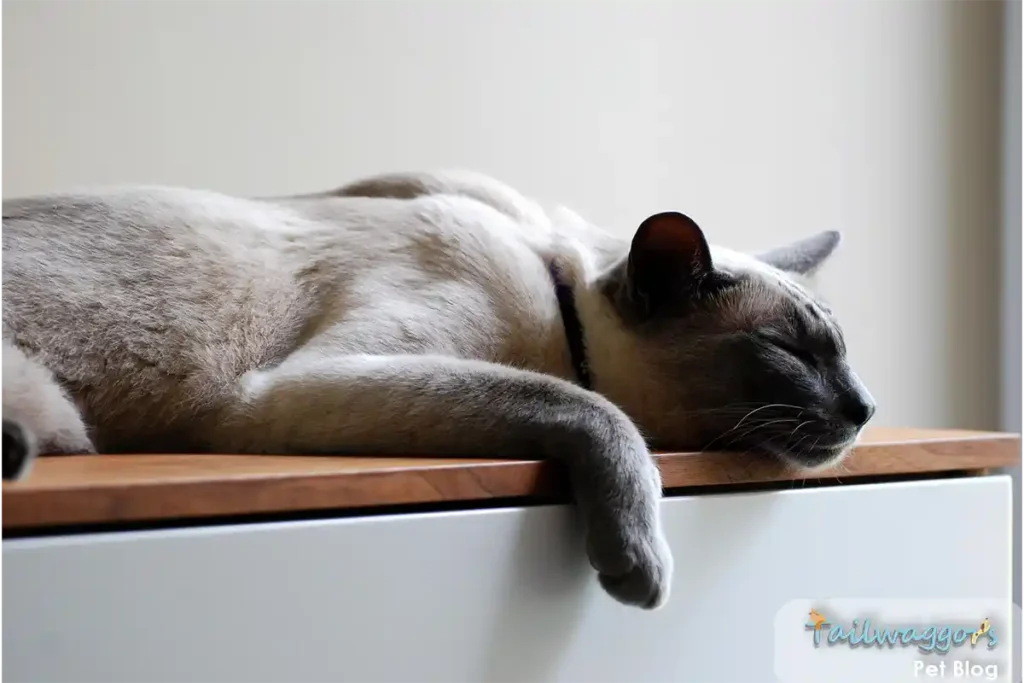
Owning a Siamese Cat: Budgeting and Financial Insights
Bringing a Siamese cat into your home is an exciting and rewarding experience. However, understanding the financial responsibilities involved is key to ensuring your Siamese cat leads a healthy and happy life. This guide outlines the initial costs, annual expenses, and practical budgeting tips to help you prepare.
Table: Cost Breakdown Analysis for Siamese Cats
| Expense Category | Initial Cost (USD) | Annual Cost (USD) | Value Rating |
|---|---|---|---|
| Adoption or Breeder Fees | $100–$2,000 | N/A | ⭐⭐⭐⭐⭐ |
| Food and Treats | N/A | $500–$1,200 | ⭐⭐⭐⭐⭐ |
| Litter and Maintenance | $30–$100 | $180–$360 | ⭐⭐⭐⭐ |
| Veterinary Care | $150–$500 | $300–$600 | ⭐⭐⭐⭐⭐ |
| Grooming Supplies | $20–$50 | $20–$50 | ⭐⭐⭐⭐ |
| Pet Insurance | N/A | $240–$720 | ⭐⭐⭐⭐ |
| Toys and Enrichment | $50–$100 | $50–$150 | ⭐⭐⭐⭐ |
| Emergency Care | $200–$5,000 (varies) | N/A | ⭐⭐⭐⭐ |
Initial Costs: Preparing for Your Siamese
Adoption vs. Breeder Fees
- Adoption Fees: $100–$300
Adopting from a shelter often includes vaccinations, spaying/neutering, and microchipping, making it a cost-effective option. - Breeder Fees: $1,000–$2,000
Purchasing from a reputable breeder ensures health guarantees and access to specific variations, like Seal Point or Blue Point.
Essential Supplies for Day One
Prepare your home with these essentials to ensure your Siamese is comfortable:
| Item | Cost Range (USD) |
|---|---|
| Litter Box | $30–$100 |
| Cat Litter (per bag) | $15–$25 |
| Food and Water Bowls | $15–$30 |
| Scratching Posts | $20–$100 |
| Cat Bed | $20–$150 |
| Toys | $15–$50 |
| Grooming Tools | $20–$50 |
Estimated Setup Cost: $150–$500
Ongoing Annual Costs
Food and Treats
Siamese cats are active and require a diet rich in protein to fuel their energy levels.
| Food Type | Cost Range (Annually) |
|---|---|
| Dry Food | $300–$600 |
| Wet Food (Optional) | $200–$400 |
| Specialty Diets | $500–$1,000 |
🐾 Tailwaggors Tip:
A mix of wet and dry food helps with hydration and dental health. Consult your vet for portion sizes tailored to your cat’s weight and activity level.
Veterinary Care
Routine vet visits ensure your Siamese stays healthy and address breed-specific risks like respiratory conditions and dental issues.
| Category | Cost Range (Annually) |
|---|---|
| Wellness Exams | $100–$200 |
| Vaccinations | $50–$100 |
| Flea, Tick, and Worm Prevention | $60–$150 |
| Dental Cleanings | $300–$500 (every 1–2 years) |
Grooming Expenses
Siamese cats have low-maintenance grooming needs but benefit from regular care.
| Type | Cost Range (Annually) |
|---|---|
| At-Home Grooming Supplies | $20–$50 |
| Professional Grooming | Optional ($50–$100 per session) |
Pro Tip: Weekly brushing helps reduce shedding and fosters bonding.
Hidden and Emergency Costs
Planning for unexpected expenses ensures your Siamese cat receives timely care.
- Emergency Vet Visits: $200–$5,000 for diagnostics or surgeries.
- Prescription Diets: $400–$1,000 annually for conditions like urinary health or weight management.
- Pet Boarding or Sitting: $25–$50 per day during travel.
🐾 Tailwaggors Tip:
Consider pet insurance covering respiratory and dental issues to offset unexpected costs.
Cost-Saving Strategies for Owners
- Buy in Bulk: Save on litter and food by purchasing during sales.
- Preventive Healthcare: Regular checkups help catch issues early, avoiding expensive treatments.
- Durable Supplies: Invest in high-quality toys, scratching posts, and bedding for long-term use.
- DIY Grooming: Learn basic grooming to save on professional services.
Is Owning a Siamese Cat Worth the Investment?
Owning a Siamese cat is a rewarding experience that requires careful budgeting and proactive care. With their affectionate and playful nature, Siamese cats bring immense joy to their owners. By planning for both routine and unexpected costs, you can ensure your Siamese thrives as a cherished member of your family.
For more ownership tips and expert advice, explore our:
Disclaimer:
The cost estimates provided in the “Siamese: Budgeting and Financial Insights” section are general approximations based on current market trends and commonly reported expenses in the United States. Actual costs may vary depending on factors such as location, individual pet needs, specific health conditions, and lifestyle choices.
These estimates are intended for informational purposes only and should not replace personal research or consultations with veterinary or pet care professionals. We recommend setting aside additional funds for unexpected expenses, including emergency veterinary care and specialized dietary or training needs, to ensure your Alaskan Malamute receives the best possible care.
Always consult with a veterinarian or trusted breeder for detailed guidance tailored to your specific situation. Tailwaggors is not responsible for discrepancies or unforeseen costs that may arise.
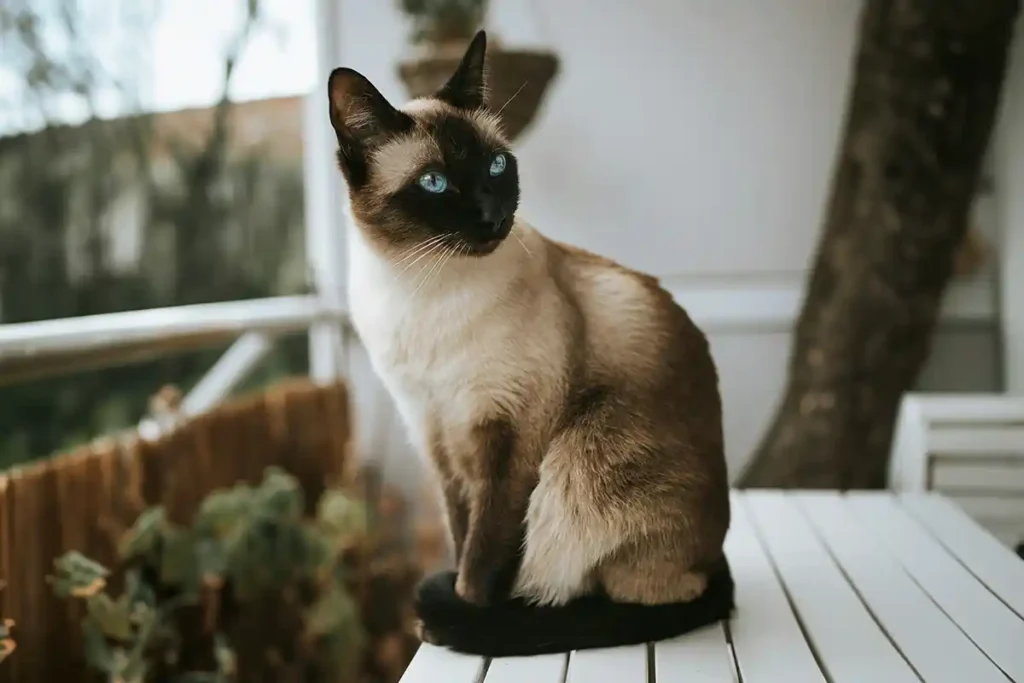
Breed Comparison: Siamese Cat vs. Other Popular Breeds
When choosing a cat breed, comparing the Siamese to other popular options can help determine the best fit for your household. With their sleek physique, mesmerizing blue eyes, and engaging personalities, Siamese cats stand out for their interactive and vocal nature. Let’s explore how they compare to Burmese, Oriental Shorthairs, and Persians.
Table: How Does the Siamese Cat Compare?
| Aspect | Siamese | Burmese | Oriental Shorthair | Persian |
|---|---|---|---|---|
| Size | Medium (8–15 lbs) | Medium (8–12 lbs) | Medium (8–12 lbs) | Medium (7–12 lbs) |
| Coat | Short, fine | Short, glossy | Short, fine | Long, dense |
| Personality | Vocal, affectionate | Playful, social | Active, curious | Calm, affectionate |
| Grooming Needs | Low | Low | Low | High |
| Energy Level | High | High | High | Low |
| Affection Level | High | High | High | High |
| Compatibility with Pets | Good | Good | Good | Good |
Siamese vs Burmese
Burmese cats share the Siamese’s affectionate and social nature but offer a quieter alternative for owners who prefer less vocal communication.
- Coat: Siamese cats have sleek, short coats requiring minimal grooming. Burmese cats, though equally low-maintenance, boast glossy coats with a distinctive sheen.
- Personality: Siamese cats are highly vocal, while Burmese are affectionate but quieter, making them ideal for owners preferring a calmer home environment.
- Pro Tip: If you love a social, affectionate cat but prefer less vocalization, the Burmese might be your perfect match.
Siamese vs Oriental Shorthair
Oriental Shorthairs are close relatives of the Siamese, sharing many physical and personality traits, but they tend to be more independent.
- Coat: Both breeds share low-maintenance coats, but Oriental Shorthairs often come in a broader array of colors and patterns.
- Energy Levels: Oriental Shorthairs are curious and playful but slightly more independent compared to the constant engagement Siamese cats thrive on.
- Pro Tip: Love the Siamese’s look but want a more independent companion? Consider an Oriental Shorthair.
Siamese vs Persian
The Persian cat’s calm demeanor contrasts sharply with the energetic and interactive Siamese, making them ideal for very different households.
- Grooming: Persians demand daily grooming for their dense, luxurious coats, while the Siamese’s sleek coat only needs occasional brushing.
- Energy: Persians are serene and laid-back, making them perfect for quiet households. Siamese cats are vibrant and playful, requiring more interaction.
- Pro Tip: For a calm, low-energy pet, the Persian excels. For active households or owners who enjoy constant interaction, the Siamese is the clear winner.
Why Choose the Siamese?
Siamese cats are ideal for families who want a lively, affectionate, and vocal companion. Their unique personalities make them stand out as one of the most engaging and interactive breeds, perfect for owners who value constant companionship.
For those deciding between breeds, our Ultimate Guide to the Ragdoll Cat and Ultimate Guide to the British Shorthair offer insights into how these breeds differ from the Siamese.
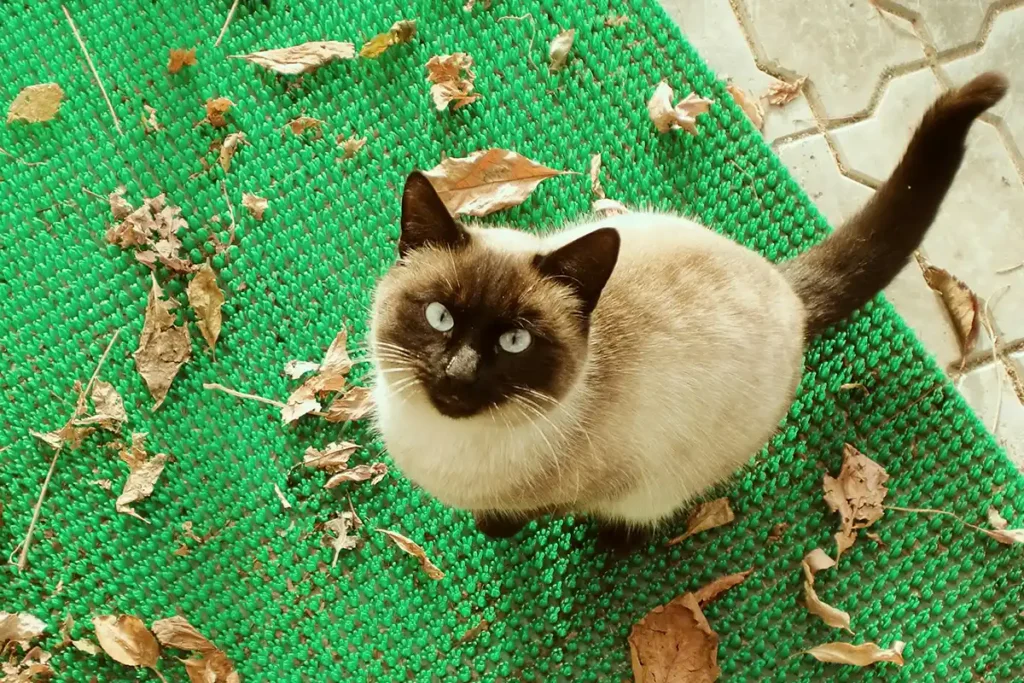
Frequently Asked Questions About the Siamese Cat
Siamese cats are cherished for their striking appearance, vocal nature, and affectionate personalities. Below, we answer some of the most common questions that prospective and current owners often have about this captivating breed.
Are Siamese cats hypoallergenic?
+No, Siamese cats are not hypoallergenic. Like all cats, they produce dander and proteins in their saliva that can trigger allergies in sensitive individuals. However, their short coat and lower shedding levels may result in fewer allergens compared to some long-haired breeds.
🐾 Tailwaggors Tip:
Regular grooming, vacuuming, and air filtration can help reduce allergens, making life easier for allergy-prone cat owners.
How much do Siamese cats weigh?
+Siamese cats are medium-sized felines, with distinct weight ranges for males and females:
- Males: 7–15 lbs (3.2–6.8 kg)
- Females: 7–12 lbs (3.2–5.4 kg)
Their slender, muscular build gives them a graceful and athletic appearance.
How long do Siamese cats live?
+Siamese cats are among the longest-living cat breeds, with an average lifespan of 12–20 years. With proper care, some Siamese cats can live up to 25 years.
🩺 Veterinary Insight:
“Providing regular preventive care, a nutritious diet, and mental stimulation significantly enhances a Siamese cat’s lifespan.” – Dr. Esther Knoetze, BSc, BVSc
Are Siamese cats good with children and other pets?
+Yes! Siamese cats are highly social and affectionate, making them ideal companions for children and other pets. Their playful and tolerant nature allows them to thrive in family settings. They often form strong bonds with both humans and animals.
🐾 Tailwaggors Tip:
When introducing Siamese cats to other pets, ensure gradual and supervised interactions to build trust and avoid conflicts.
Do Siamese cats like water?
+Many Siamese cats are intrigued by water. They may enjoy:
- Batting at running faucets
- Dipping their paws in water bowls
- Joining their owners in the shower
This curiosity adds to their playful and unique personality.
How do you train a Siamese cat?
+Siamese cats are highly intelligent and respond well to positive reinforcement training. Treats, praise, and clicker training can help teach them commands like “sit” or tricks like “fetch.”
🐾 Tailwaggors Tip:
Keep training sessions short and engaging to maintain your Siamese cat’s attention. Immediate rewards for good behavior ensure better results.
What are the grooming needs of a Siamese cat?
+Siamese cats have sleek, short coats that are low-maintenance. Weekly brushing helps remove loose hair and keeps their coat shiny. Grooming sessions are also a good time to check their ears, eyes, and skin for abnormalities.
🩺 Veterinary Insight:
Combine coat brushing with regular dental care and ear cleaning to maintain overall health.
Are Siamese cats prone to any specific health problems?
+While generally healthy, Siamese cats are predisposed to certain health conditions:
- Dental Problems: Regular brushing and dental checkups are crucial to prevent periodontal disease.
- Respiratory Issues: Due to their facial structure, some Siamese cats may experience breathing difficulties.
- Progressive Retinal Atrophy (PRA): A genetic condition leading to gradual vision loss.
- Amyloidosis: Protein deposits affecting the kidneys or liver.
🩺 Veterinary Tip:
Early detection through regular veterinary checkups can help manage these conditions effectively.
How much exercise does a Siamese cat need?
+Siamese cats are highly energetic and require daily interactive play sessions to stay mentally and physically stimulated. Recommended activities include:
- Feather wands
- Laser pointers
- Puzzle feeders
- Climbing structures
Can Siamese cats be kept indoors?
+Yes, Siamese cats thrive indoors as long as they receive ample mental stimulation and physical activity. Providing toys, scratching posts, and interactive playtime keeps them happy and prevents destructive behavior.
🐾 Tailwaggors Tip:
Consider setting up window perches or cat trees to create an engaging environment that satisfies their natural curiosity.
The Siamese cat is a breed that combines beauty, intelligence, and affection in one sleek package. By understanding their unique traits and needs, owners can develop a rewarding and fulfilling relationship with their Siamese companion. With proper care, mental stimulation, and regular veterinary checkups, Siamese cats bring endless joy and companionship to their families.
For emergency situations or keeping your home cat-friendly, explore these must-read guides:
Conclusion: Wrapping Up the Ultimate Guide to the Siamese Cat
Siamese cats are truly extraordinary companions, blending beauty, intelligence, and affection into one unforgettable breed. Their sleek physiques, mesmerizing blue eyes, and playful personalities make them a cherished addition to any home. Whether you’re new to cat ownership or a lifelong feline enthusiast, Siamese cats will captivate you with their vocal charm and unwavering loyalty.
Providing the Best Care for Siamese Cats
To help your Siamese cat thrive, it’s essential to understand their unique needs. From addressing breed-specific health concerns, such as dental issues or PRA, to ensuring regular exercise and mental stimulation, attentive care is key. Prioritizing a balanced diet, routine veterinary checkups, and an enriching environment ensures a happy and healthy life for your Siamese companion.
“Proactive care and preventive measures can significantly enhance your Siamese cat’s lifespan and quality of life,” advises Dr. Esther Knoetze, BSc, BVSc.
Thinking of Adopting a Siamese Cat?
Adopting a Siamese is a rewarding experience, but it requires a commitment of time, resources, and love. As a high-energy and affectionate breed, Siamese cats flourish in homes where they receive ample interaction and care. In return, they offer unparalleled companionship, joy, and loyalty.
If you’re interested in exploring other breeds, visit our Complete Guide to Choosing the Perfect Cat Breed or dive into the unique traits of the Abyssinian Cat.

Share Your Siamese Story!
We’d love to hear about your experiences with Siamese cats! Share your stories, tips, and insights in the comments section below. Don’t forget to connect with us on social media for expert advice, care tips, and the latest updates about Siamese cats and other incredible feline breeds. Contact Tailwaggors.
Meet the Siamese cat—a fascinating companion with a regal heritage!
🐾✨ Explore their personality, health tips, costs, and more in this must-read guide.
Share with your fellow cat lovers and hear what they say 🐱❤️


